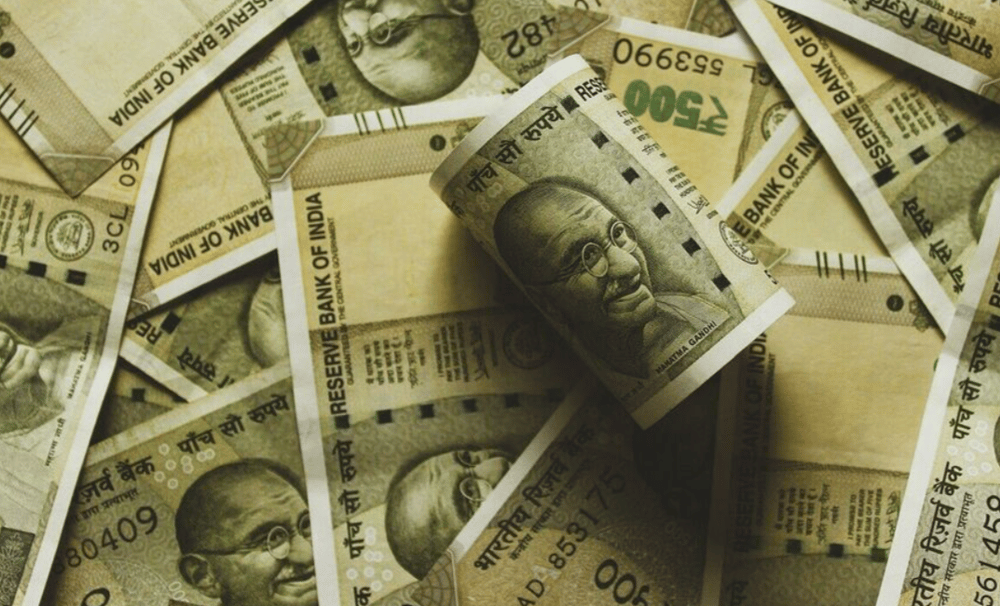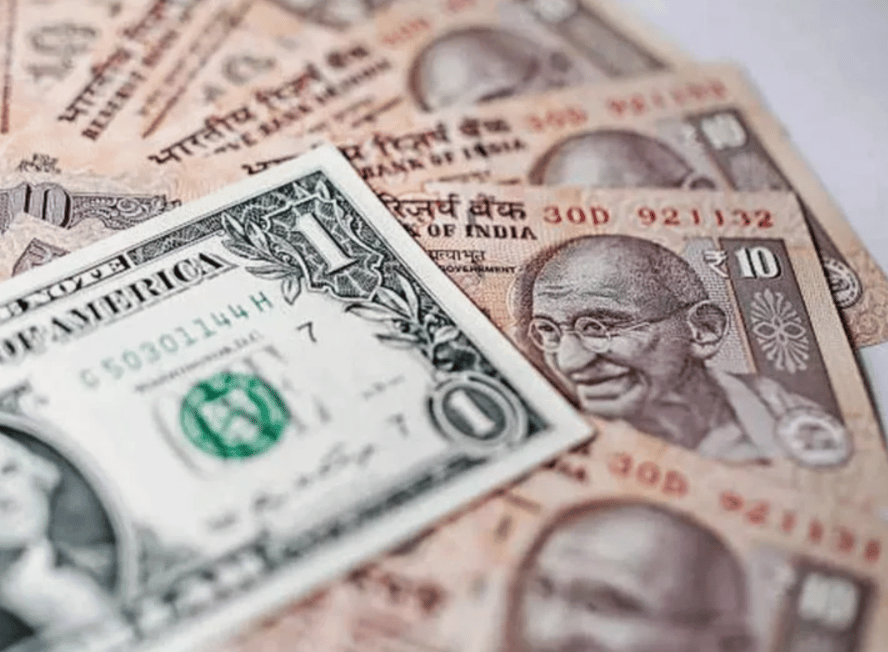

On Tuesday, the Indian rupee experienced a slight depreciation as regional currencies took a breather following a fall in the value of the Chinese yuan in offshore markets. The rupee weakened due to increased demand for US dollars, particularly from oil companies and importers. The currency’s movements reflect broader trends in the foreign exchange market, influenced by the fluctuations in China’s currency and the overall dynamics of global trade.
As of 11:20 AM IST, the Indian rupee traded at 84.55 to the US dollar, marking a 0.4% decrease. While the US Dollar Index was below the 100 mark, the offshore Chinese yuan had also depreciated by 0.2%. Notably, the local currency's correlation with the offshore Chinese yuan surged, reaching a near three-month high, indicating the impact of shifts in Chinese trade policies on the Indian rupee’s movements.
Several factors contributed to the decline of the Indian rupee against the US dollar, particularly the fluctuations in the Chinese yuan and the demand for US dollars. This section explores the key dynamics that shaped the rupee's movement on the day.
Key Drivers Behind the Rupee’s Weakening:
Demand for US Dollars from Oil Companies One of the significant factors impacting the rupee’s performance is the demand for US dollars by Indian oil companies. India is one of the largest importers of oil, and with rising oil prices, companies need more dollars to settle their import payments, putting pressure on the rupee.
Impact of Chinese Yuan Depreciation The Chinese yuan's fall in offshore markets is another influential factor. As the yuan weakened by 0.2%, there was a ripple effect across other Asian currencies, including the Indian rupee. The strengthening of the US dollar against the yuan often leads to weaker regional currencies due to broader market sentiment.
US Dollar Index Movements The US Dollar Index, which tracks the performance of the dollar against a basket of currencies, was below the 100 mark, signaling some weakening of the dollar. However, the rupee's drop was more pronounced due to local market dynamics and its link to regional currency trends.

A key observation in recent trading sessions has been the growing correlation between the Indian rupee and the Chinese yuan. This relationship is significant as it highlights the interconnectedness of Asian currencies, especially given the importance of both China and India in global trade.
Key Insights on the Correlation Between the Rupee and Yuan:
Rupee Correlation Reaches Three-Month High The 14-day correlation between the Indian rupee and the offshore Chinese yuan has risen to its highest level in nearly three months. This suggests that the rupee’s movement is increasingly influenced by shifts in the Chinese currency market, which reflects broader global economic sentiments.
Optimism from US Trade Policy Shifts There has been optimism surrounding potential changes in US trade policy, particularly regarding the trade relationship with China. Any positive sentiment toward a de-escalation of the trade war between the US and China typically strengthens Asian currencies, including the rupee. However, these effects can be volatile and short-lived, as was evident in the rupee's drop on Tuesday.
Regional Currency Fluctuations The recent movements in the yuan also had a direct impact on other regional currencies, including those of Southeast Asia and India. As the Chinese yuan depreciates, investors may view this as a signal of broader economic challenges in the region, leading to a pullback in emerging market currencies.

While the depreciation of the rupee on Tuesday was partly due to external factors like the Chinese yuan's decline, the ongoing demand for dollars from Indian importers and oil companies remains a critical element in the rupee’s trajectory.
Key Considerations for the Indian Rupee Moving Forward:
Oil Prices and Indian Dollar Demand India's status as a major oil importer means that fluctuations in global oil prices can directly impact the rupee. If oil prices rise, the demand for dollars increases, as oil companies require foreign currency to make payments. This sustained demand continues to put pressure on the rupee.
Trade and Current Account Deficit The Indian economy’s reliance on imports, particularly energy, contributes to a persistent trade deficit. This imbalance requires the country to purchase dollars to finance its imports, which can exert additional downward pressure on the rupee in times of global uncertainty.
Potential for Future Currency Intervention The Reserve Bank of India (RBI) may step in to stabilize the currency if the depreciation becomes more pronounced. Past interventions have involved RBI selling US dollars from its reserves to support the rupee during times of stress.
The Indian rupee’s slight depreciation on Tuesday is part of a broader pattern of regional currency fluctuations influenced by various global and domestic factors. While the fall in the Chinese yuan played a significant role, the ongoing demand for US dollars, particularly from oil companies and importers, remains a key factor in the rupee’s performance.
The relationship between the rupee and the yuan suggests that global trade dynamics and the broader geopolitical landscape will continue to influence Indian currency movements. As market conditions evolve, the rupee’s outlook will depend on both external economic factors and the internal demand for foreign currency.
This sale could unlock groundbreaking shifts in the automation landscape in tech
Innovative sales strategies like this have the potential to reshape the tech automation landscape